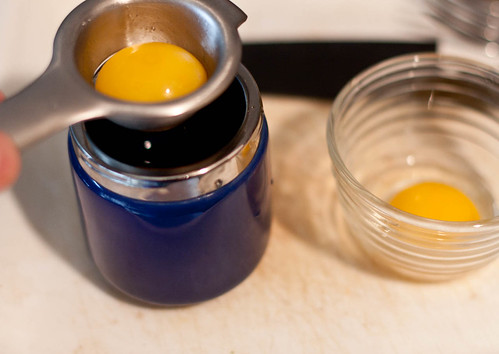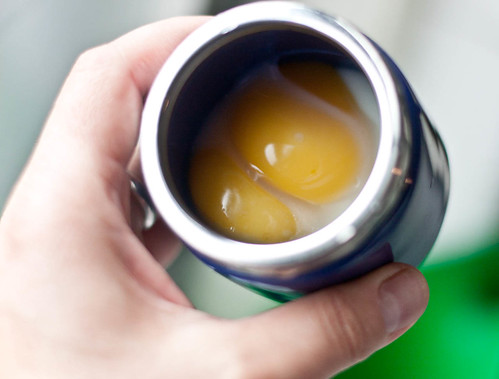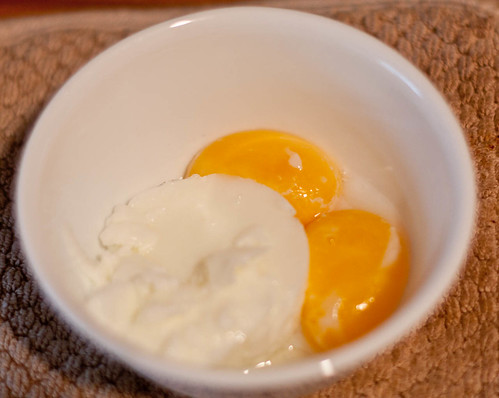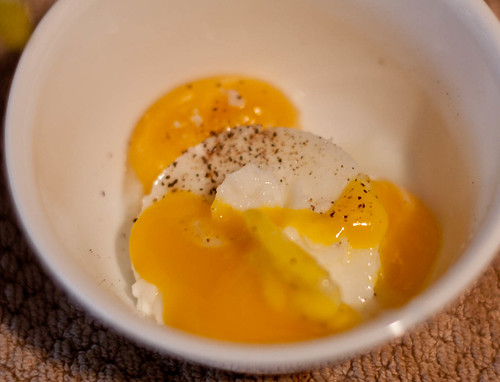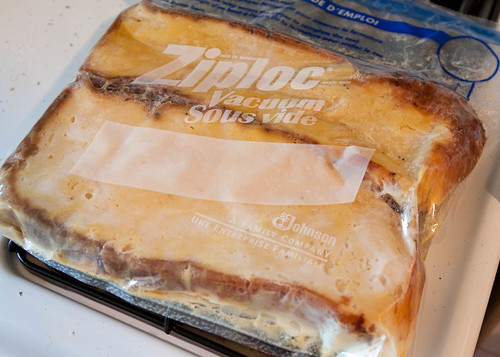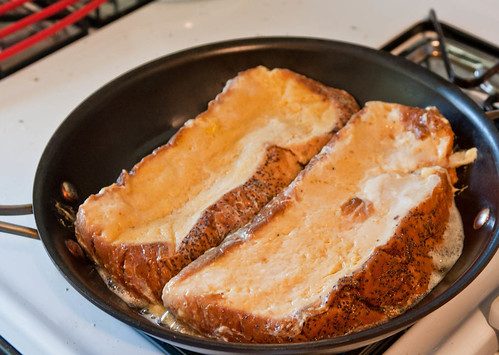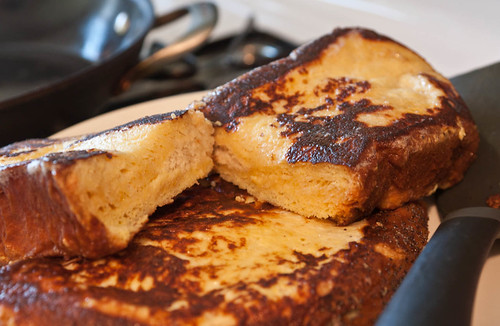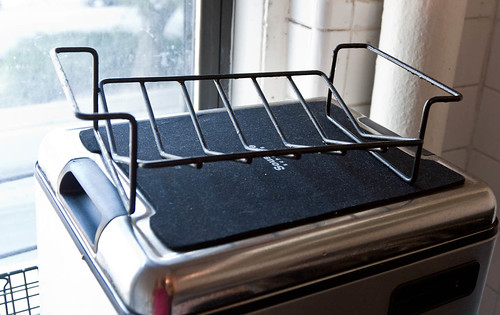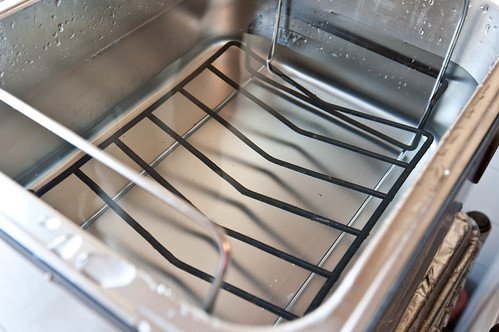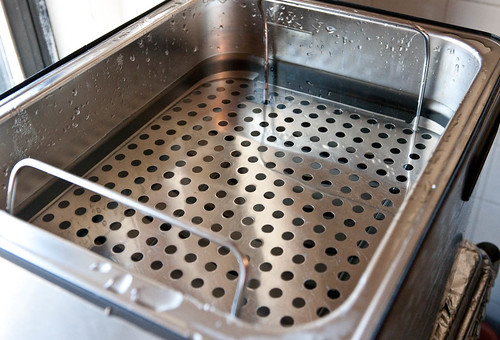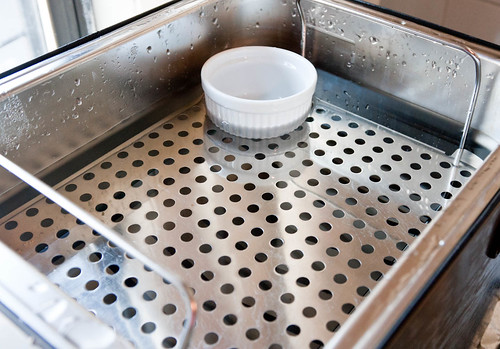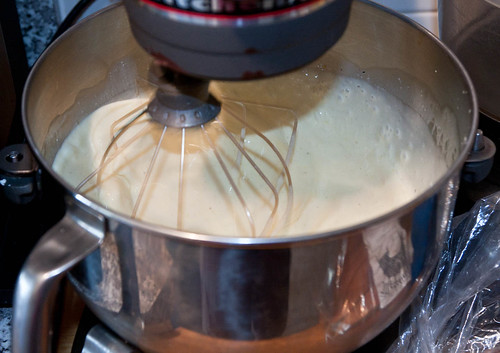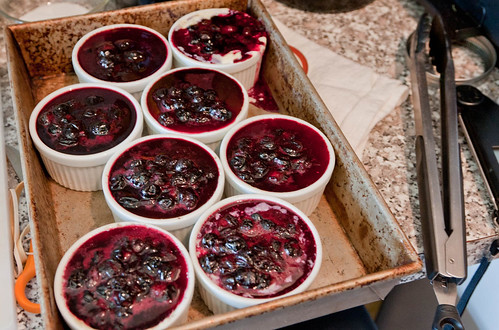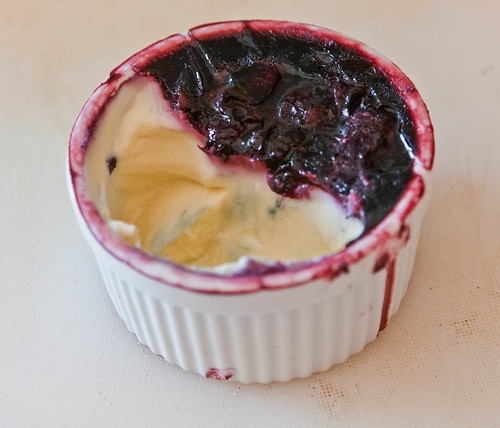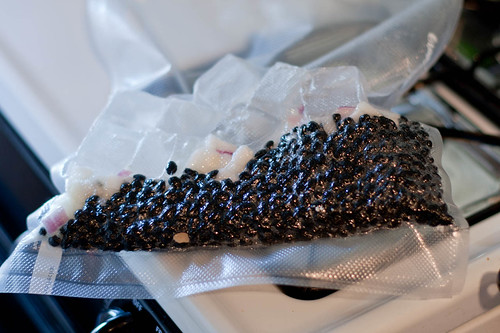Since I last wrote about cooking at home, I’ve been looking for more ways to try to cook at home. Cooking large portions in advance helps, but I think it’s somewhat unsatisfying to eat that way on a regular basis. Those foods that can be more easily prepared beforehand tend to be heavier and less appealing during the summer – lasagnas or casseroles or big braises. I’ve recently acquired a Sous Vide Supreme oven, and it’s completely changing the way I look at this.
Sous vide cooking is actually pretty simple – you seal the food in a vacuum bag (like a Foodsaver bag) and then cook it in a precise temperature water bath at very close to the temperature you want the final product to be. If you’ve eaten in a high end restaurant in the past few years, you’ve had food cooked sous vide – almost all of them are using it now, with good reason. When the food is done (at minimum, enough time for the middle to reach the equilibrium temperature), you take it out of the bag, sear it in a hot pan if needed (most proteins will benefit from a little browning to develop more flavor, but they really only need about 30 seconds per side in a very hot pan on the stove), and serve it right away. If you leave it in the water bath for a few extra hours, it’s no problem – the texture of some food will break down after an extended period of time, but for the most part, it’s hard to overcook things (fish and eggs are two exceptions – they’re more finicky about timing, but that still buys you a margin of an hour or two over). Because you can set the oven at 1 degree increments and it will stay at pretty much exactly that temperature, you can get exquisite results with very little effort, and if you get distracted, it’s no problem.
There are a few issues with trying to get dinner on the table with small children in the house, and these problems are triply compounded with only one parent in the house – you can get distracted by having to change a diaper or give one of the kids a little extra attention. Right before dinner is crankypants time. The kids might want to stay out at the park for an extra half an hour or 45 minutes. You might want to stay out at the park for an extra half hour or 45 minutes. There goes your prep time. Watching a chicken breast or a steak cook on the stove for 15-20 minutes with a small child is far too long (and takes away from the time to cook the rest of the meal), but searing for a minute or two while everything else comes together is completely doable. What’s even better is that you can do the sous vide step the day before, plop the bag right into an ice bath, and then put it in the fridge until dinner time, when you just have to take it out and sear it or warm it. What’s even better than that is that you can put the bag in the sous vide oven directly from the freezer. And what’s even better than that is that this entire process actually makes your end result tastier and more nutritious instead of compromising quality. Commercial frozen convenience food is generally pretty terrible. Sous vide food is simply… better.
My wife and I both work long hours, and getting dinner on the table can be a challenge. Often, our window for doing so may be as little as 15-20 minutes from the time we walk in the door, otherwise the kids will start to get hungry and have a hard time settling down to eat. In the past year, we’ve missed that window more often than I’d like, and if we have a half an hour or more of cooking ahead of us, we’ll usually end up ordering instead. In addition to being less healthy overall, this can cost us around $30-$40 per meal over the cost of what we would have paid for ingredients for dinner, even buying top quality ingredients at the farmer’s market. At $450, the Sous Vide Supreme is pricey, but if it can prevent us from ordering out even once a week, it will literally pay for itself in four months. We’ve already used it five times in the first week. Time will tell if this is a novelty effect, but so far I’ve been overwhelmingly thrilled with the results. There’s been a lot of focus on 30 minute meals, but for a busy working parent or two, that can be an eternity. I love to cook, but even after years of practice, my timing isn’t perfect. Pair the Sous Vide Supreme with a rice cooker with a timer and a microwave vegetable steamer and it becomes possible to get a completely freshly cooked dinner on the table with minimal work in less than ten minutes. Even without going to that extreme, it significantly cuts the amount of stove time required for a “regular” meal.
Sous vide cooking certainly requires some planning ahead – it’s not for quick dinners unless you start early, but you don’t have to really figure out how early to start – putting the bag in before you leave in the morning is just fine. It’s also a huge psychological boost, because when you get home, dinner’s already on the way to being cooked. When all you want to do is sit down after a long day and the kids are hungry, it really helps to have things already started.
We’ve done chicken breasts, steak, 30 hour country style pork ribs, carrots in butter – all pretty perfect. Soft boiled eggs and pork chops deserve special mention. Eggs do completely different things in sous vide, because the yolk actually cooks at a lower temperature than the white, and so it cooks first. A soft boiled egg in sous vide gets you a creamy but cooked yolk and a runny white. It’s strange, but entirely delicious. Hard boiled eggs were a little off, because cooking at a high enough temperature to set the white actually overcooks the yolk a little bit. I prefer 8 minutes in water just off the boil. Big fat scallops came out intensely creamy and tender.
And then, there are the pork chops. I’ve struggled for years to get a perfectly cooked pork chop. I’ve tried pan frying, broiling, baking, and braising, and nothing works reliably. They’re just too lean and too thin. They overcook before the outside starts to brown. With sous vide, they’re just right, every time, with almost no effort. They’re cooked all the way through, but not overcooked, and they’re so tender that you can cut them with a fork.
The oven comes with a few recipes with common timings, but there’s little news there if you know what your target temperatures are for regular cooking – steak at 130F, pork chops at 135F, chicken at 142F, fish at 140F, etc… There is no shortage of recipes on various food blogs, and this is a very good intro guide, though it seems meant for a more industrial setting. There are some extra safety considerations, but it’s mostly just common sense, and much of it doesn’t come into play in a home setting where you’re not storing the bags for long periods of time. You just have to be careful that you’re dealing with a somewhat anaerobic environment that can breed microbes that usually aren’t a problem in home kitchens. As long as you’re buying quality food, treating it with respect (understanding the rules of heating, chilling, and storage), and eating it promptly, you shouldn’t have any problems.
In short, this device is amazing, and it’s the future. For me, it fulfills every convenience promise of the microwave and the crock pot, neither of which I’ve ever been happy with from a culinary perspective. There is a small consideration of the extra waste in plastic bags, but I balance that against the amount of waste generated from takeout, which is far greater.
I can’t recommend it enough.

